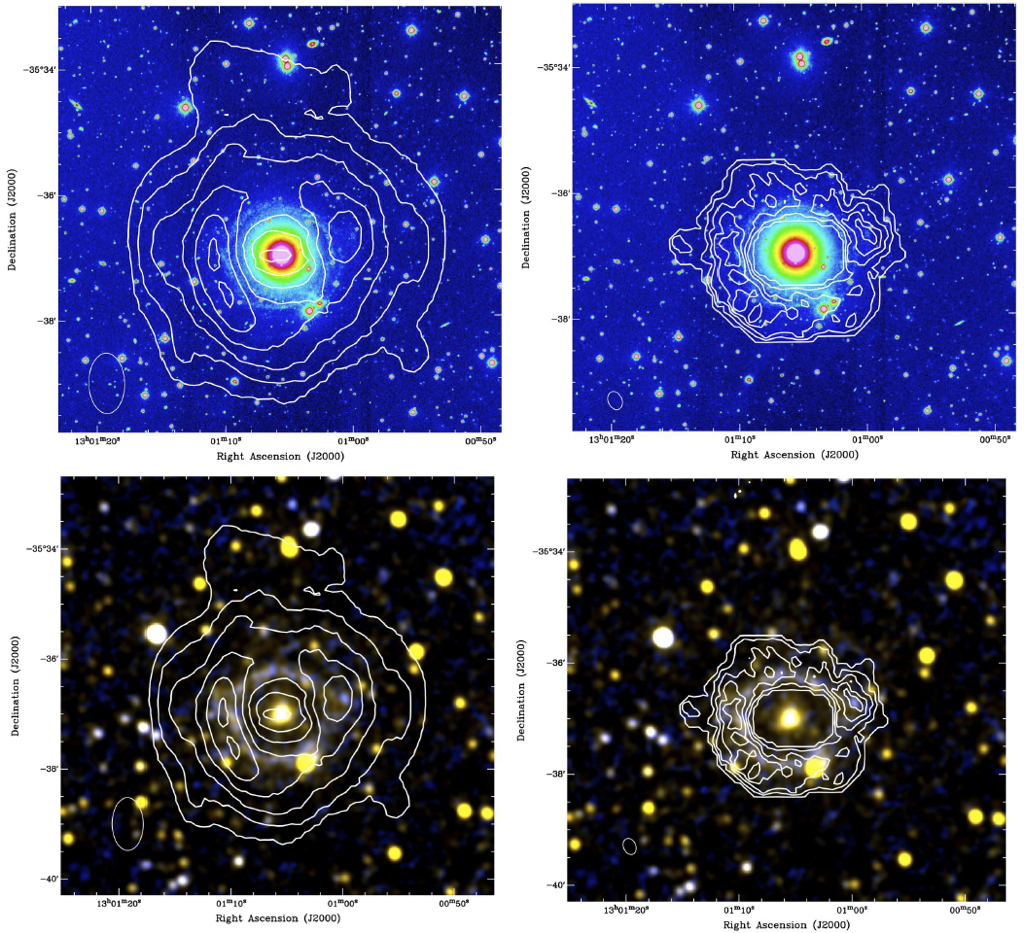Daily Image
08-04-2009Radio, optical and UV light: how to turn a simple galaxy into a puzzle
| Submitter: | Paolo Serra |
| Description: | The appearance of galaxies can vary wildly as one observes them with longer exposures, or at different wavelengths. ESO 381-47 is one of these cases. Long thought to be a boring elliptical, this galaxy has recently been discovered to be a much more complex system. Its bulge is surrounded by a stellar ring or a disc with tightly wound spiral arms; at the edge of the disc, a ring of young stars shines in the ultraviolet light; and surrounding it all, a giant gaseous ring containing 7 billion solar masses of neutral hydrogen extends out to 45 kpc from the galaxy centre, and has likely fueled the formation of stars on the UV ring. The picture above shows ESO/WHT optical (top) and GALEX NUV+FUV (bottom) images of ESO381-47. Contours of constant HI column-density are overlaid in white and correspond to a low- (left) and high-resolution (right) total-HI image reconstructed from a combination of VLA and ATCA observations. These data reveal a number of interesting features. The HI ring is nearly face-on and can be modeled as a warped system extending all the way to the outer, diffuse region. Another interesting aspect is that, on close inspection, the peak of the HI emission falls just outside the ring of young stars. In a paper recently accepted for the Astronomical Journal, we (a large crowd including Serra, Morganti & Oosterloo) discuss a number of possible interpretations of this observation, including a radial density wave triggered by a collision with a companion galaxy (indeed, a small companion is visible at the south-west edge of the optical disc and is clearly interacting with ESO 381-47), spiral density waves, and accretion of gas from the interstellar medium. ESO 381-47 is a spectacular case showing how complex galaxies can be, and challenging traditional classification schemes based on optical images. You can find more details at http://arxiv.org/abs/0903.5331 . |
| Copyright: | Columbia University & ASTRON |
| Tweet |  |
